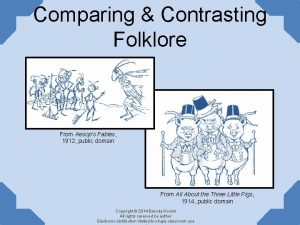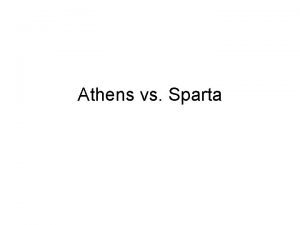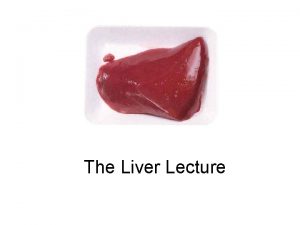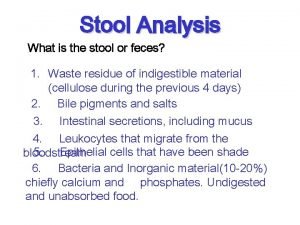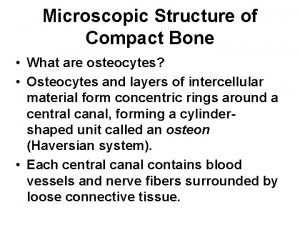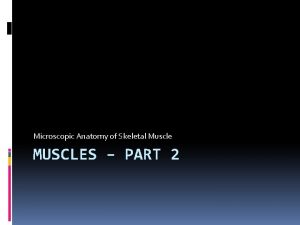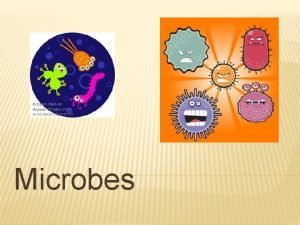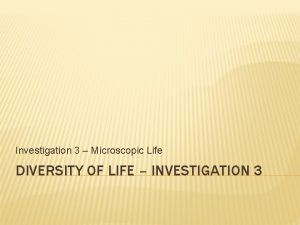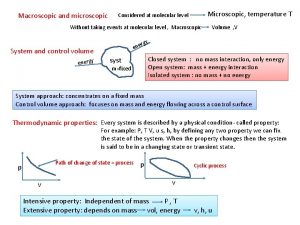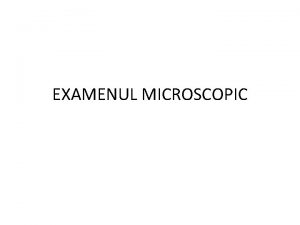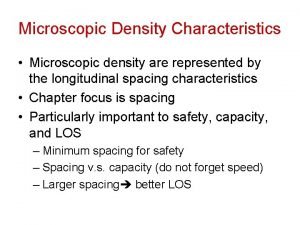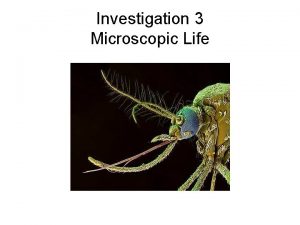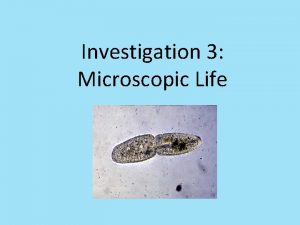Investigation 3 Microscopic Life Similarities and Differences On




























- Slides: 28

Investigation 3 Microscopic Life

Similarities and Differences • On a separate sheet of paper construct a Double Bubble Map and fill in what you know. Use one color (you will be adding to this paper in a separate color). Elodea Leaf Paramecium

Questions-ONLY DO THE FIRST PART AT 100 X • What do you see when you look at the Elodea? • When you focus up and down through the leaf sample, what did you notice? • Are the rectangles flat, like designs drawn on the surface of the leaf, or are they three -dimensional? • Are the boxes empty? • How many layers of these “bricks” do you see?

Elodea Cells The boxes or bricks that you see in the Elodea are cells. Cells are units From which the Elodea leaf are made. They are too small to see with the naked eye.

Estimate the Size of Cells and Draw Them. • Conduct Part 2 at 400 X. • It is ok to draw a representative sample of the cells as long as the size is proportionate to the field of view.

Questions after Part 2 • Are all of the cells in an Elodea leaf the same size? • How many layers of the cells are there in an Elodea leaf? • Are the large cells on the top of the leaf or on the bottom? • How big are the Elodea cells?

In the middle of the 17 th Century Robert Hooke was the first to describe the tiny units in the plants as cells.

Cytoplasmic Streaming • Did you notice anything else moving inside the cells? • What did it look like? • Cytoplasmic Streaming Video Cells are filled with a fluid called cytoplasm. Cytoplasm can sometimes Be seen moving inside the cells of living things.

Cell Wall: Protects the cell

Cytoplasm: Fluid inside a cell

Chloroplast: Structure that gives plants their green color

Did you know? ? • The cell is the basic unit of life. • Life happens in cells.

Paramecia Observations • What movements did you observe? • What did you see on the outside of the paramecium? • How big was it at 100 X? At 400 X? • Are they living or nonliving? What is your evidence? • Could you see if it was doing all of the things you have listed in your definition of a living organism? • What might we do to see some of these acivities?

Paramecia Up Close

Paramecia are single-celled organisms- Add info to D. B. Map Paramecia are not made of cells, because each paramecium itself is a single cell. Just like the individual green “bricks” in the Elodea are individual cells, each paramecia is an individual cell. The Elodea plant is an organism. Elodea is a multicellular organism Because it is made up of many cells. The Paramecium is an organism. Paramecia are single-celled organisms because they are one cell.

Share Ideas • Remember, our definition of an organism is any living thing- a plant, an animal, or any other lifeform that is free-living. An organism is always free-living, that is it is not a part of a larger living organism. • • Can a single living cell be a living organism? Can a single living cell not be a living organism? Is an Elodea leaf cell a living organism? Is a paramecium cell a living organism?

Important Point in Our Investigation of Life We have been developing our definition of “living” by describing the characteristics of life-the functions (what they do) and requirements (what they need) that are common to all things we consider living. These things are also characteristics of cells. Cells are alive! Life happens in cells and only in cells. Some cells live alone and some live with millions of others. Both are alive, and both do all of the things that we recognize as living.

However… Not all cells are organisms, because not all cells are able to live independently (on their own).

Protist Paramecia are single-celled organisms in the kingdom of life called Protista (pro-TEES-ta). In Greek, proto means early, and protist means the very first. So single-celled organisms like paramecia are members of a kingdom of life that includes organisms that are similar to some of the very first life-forms on Earth. Protists are not animals! Animals are always multicellular. Protista is a separate kingdom whose members are mostly single-celled.

Characteristics of Life • So, should we add anything to our Characteristics of Life?

Feeding Time! • You will be adding one drop of Congo-reddyed yeast to a new paramecia wet mount slide. • Before we observe however…why the dye? – Congo red does two things. It makes it easier to see the yeast, and it is an acid indicator. Watch what happens when acid interacts with Congo red yeast. DEMONSTRATION.

Cilia: Used for movement The bubbles were water-expelling vesicles. Organelle: Paramecia’s guts

What can a Single- cell Organisms do? What can a Multi-cell organisms do? • ___Need Water • __Exchange Gases • ___Use Energy from Food • _____Grow • __Eliminate Waste • ____Reproduce

Mini pond Hunt • What is a Safari? – Take samples from: • • The Surface The Mid-water region The bottom The surfaces of structures like leaves, grass, soil or rocks.

Volvox



Flagellates
 Inherited traits of a lion
Inherited traits of a lion Ppst philippine professional standards for teachers
Ppst philippine professional standards for teachers The ant and the grasshopper plot diagram
The ant and the grasshopper plot diagram Compare and contrast of athens and sparta
Compare and contrast of athens and sparta Raymond's run activities
Raymond's run activities Similarities and differences of wid, wad and gad
Similarities and differences of wid, wad and gad Definition of compare/contrast
Definition of compare/contrast Cross cultural differences and similarities
Cross cultural differences and similarities Identifying similarities and differences
Identifying similarities and differences Marzano similarities and differences
Marzano similarities and differences What is the similarities and differences of fascism
What is the similarities and differences of fascism Identifying similarities and differences examples
Identifying similarities and differences examples Similarities and contrast
Similarities and contrast Similarities and differences table
Similarities and differences table Example paragraph of comparison and contrast
Example paragraph of comparison and contrast Formalistic approach in literature
Formalistic approach in literature Similarities and differences table
Similarities and differences table Identifying similarities and differences
Identifying similarities and differences Similarities and differences
Similarities and differences Secretory diarrhea causes
Secretory diarrhea causes Bile juice
Bile juice Stool exam normal values
Stool exam normal values Art labeling activity figure 23.5
Art labeling activity figure 23.5 Microscopic anatomy of compact bone
Microscopic anatomy of compact bone Microscopic anatomy of skeletal muscle
Microscopic anatomy of skeletal muscle Microscopic organism definition
Microscopic organism definition Gse test
Gse test Microscopic vision ethics
Microscopic vision ethics Current density resistivity
Current density resistivity


